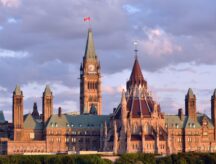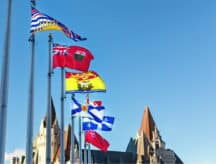IRCC: Canada welcomed over 35,000 new immigrants in June
Canada recorded its strongest month for new permanent resident arrivals during the pandemic in June 2021, according to the office of Immigration Minister Marco Mendicino.
In a recent Globe and Mail article, the minister says “We are going to make good on our commitment to land 401,000 new permanent residents.”
Find Out if You’re Eligible for Canadian Immigration
Under its Immigration Levels Plan 2021-2023, the Canadian government is seeking to welcome at least 401,000 new immigrants annually, beginning this year. Prior to the pandemic, this target was set at 341,000 newcomers.
The plan is the most ambitious in Canada's history. Only once has Canada welcomed over 400,000 immigrants in a year. This took place in 1913, but Canadian immigration plummeted immediately after due to the onset of the First World War.
The minister's office estimates that Canada welcomed over 35,000 new permanent residents in June. In follow up email correspondence with CIC News, the department of Immigration, Refugees and Citizenship Canada (IRCC) said its preliminary figures show Canada welcomed 35,700 immigrants last month. This figure is significantly higher than Canada's totals in recent months.
Canada got off to a strong start to the year. It welcomed 24,680 new immigrants in January but lost momentum in the months to follow. The country then welcomed 23,395 in February, 22,425 in March, and 21,155 in April, and 17,100 in May.
Altogether Canada has welcomed some 143,000 new permanent residents through the first six months of 2021 which remains well short of the pace it needs to welcome 401,000 newcomers by the end of this year.
In order to achieve this newcomer target, Canada needs to land another 258,000 immigrants — an average of 43,000 per month — over the rest of the year.
Find Out if You’re Eligible for Canadian Immigration
Welcoming this volume of immigration over the remaining six months will be difficult but there is an outside chance it can be achieved.
Prior to the pandemic Canada welcomed an average of 25,000 to 35,000 newcomers per month. Immigration levels tend to be higher in the warmer months as more newcomers arrive during favourable weather conditions and leading up to the start of the academic and business calendar in September.
In 2019, levels were stronger in the second half of the year compared to the first as Canada welcomed 180,000 newcomers between July and December.
Assuming Canada welcomes that same level in the second half of 2021, it will conclude the year at just over 320,000 new permanent residents which is still below its target.
However there are several tailwinds remaining that could propel Canada closer to its newcomer goal.
Some 23,000 additional Confirmation of Permanent Residence (COPR) holders are now eligible to move to Canada after restrictions on them were eased on June 21st.
Anyone else newly approved for permanent residence can also immediately move to Canada as a result of this easing.
IRCC also introduced six new permanent residency streams that will enable some 90,000 international student graduates and essential workers to remain in Canada. The department's goal is to process some 40,000 of these applications by the end of this year.
The third tailwind is also from the domestic pool of permanent residence candidates. IRCC has been breaking various Express Entry records throughout the year as it prioritizes Canadian Experience Class (CEC) candidates.
Draw sizes are larger than ever while cut-off scores are at record lows. According to IRCC, some 90 per cent of CEC candidates currently reside in Canada so it is easier for the department to transition them to permanent residence amid the pandemic than candidates abroad. IRCC has already issued nearly 100,000 Express Entry invitations this year which is almost double the invitations it issued at the same point in 2020. A significant portion of those invited during the pandemic should complete their permanent residence landing by the end of 2021.
The minister's office told the Globe that the 45,100 permanent residence applications IRCC processed in June were the highest ever, which suggests that IRCC has the capacity to process and finalize the necessary number of applications to achieve its levels goal.
There are risks along the way that could disrupt IRCC's plans. The global coronavirus situation remains volatile and things such as increased case levels and travel restrictions could get in the way. For example, Canada continues to restrict flights from its main newcomer source country, India.
A prolonging of this restriction could get in the way of IRCC's goal. Further delays to COPR holder arrivals is another risk. IRCC is currently seeking to correspond with thousands of expired COPR holders to arrange their landing in Canada. This is a time-consuming process as IRCC needs to individually contact each COPR holder to ensure they have all the necessary documents to complete the immigration process.
Nonetheless, the coming months should see immigration levels remain high. There also remains a strong chance that monthly immigration totals will hit record highs by the end of the year due to the combination of more overseas arrivals and in-Canada applicants completing their landings.
Find Out if You’re Eligible for Canadian Immigration
© CIC News All Rights Reserved. Visit CanadaVisa.com to discover your Canadian immigration options.
- Do you need Canadian immigration assistance? Contact the Contact Cohen Immigration Law firm by completing our form
- Send us your feedback or your non-legal assistance questions by emailing us at media@canadavisa.com







